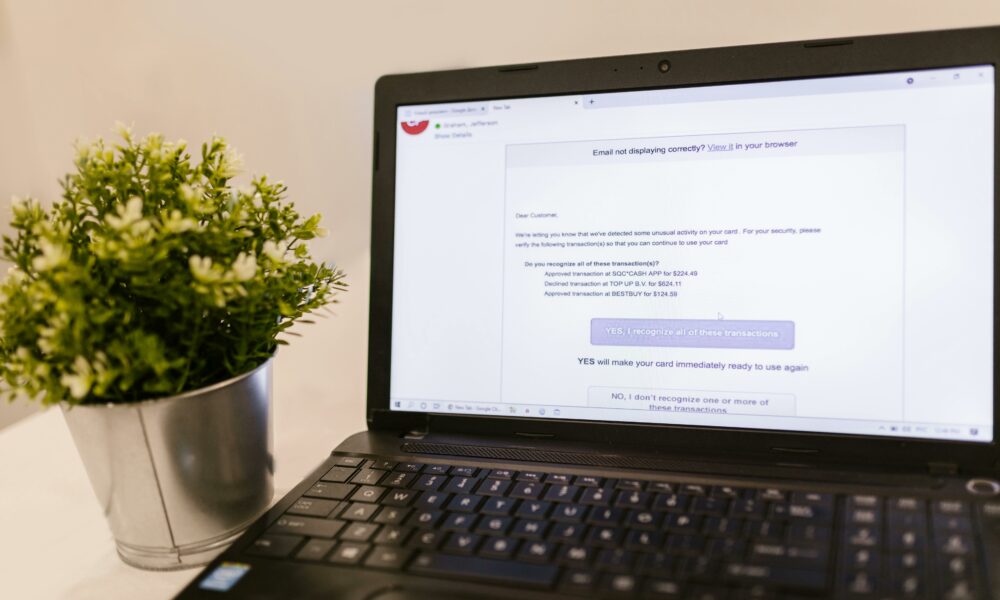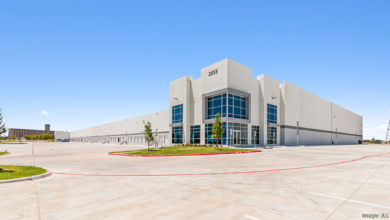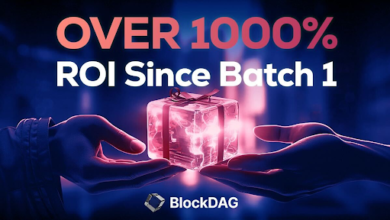How Do Businesses Effectively Personalize User Experiences in Email Campaigns?

In the quest to create more engaging email campaigns, we’ve gathered insights from CEOs and marketing experts on personalizing user experiences. From segmenting audiences for tailored content to establishing exclusive email-content clubs, discover the diverse strategies our fourteen contributors use to enhance customer engagement through personalization.
- Segment Audiences for Tailored Content
- Celebrate National Holidays with Customers
- Use Predictive Analytics for Cart Abandonment
- Optimize Emails for Device Compatibility
- Write Personalized Email First Sentences
- Leverage Data for Individual Interests
- Personalize the “From” Field in Emails
- Implement Smartlead for Customized Emails
- Incorporate Interactive Email Elements
- Apply Empathetic Segmentation for Engagement
- Focus by Topical Domain Authority
- Integrate Klaviyo for Dynamic Email Flows
- Address Specific Client Website Needs
- Create Personalized Product Bundles
- Establish Exclusive Email-Content Clubs
Segment Audiences for Tailored Content
We start by leveraging intent data and behavioral signals to segment our audience into micro-groups with common needs or interests. For example, we may group users by industry, job role, product usage, or recent site interactions.
Then, for each segment, we craft targeted content and messaging that speaks directly to their pain points. This includes using dynamic content blocks to personalize subject lines, preview text, images, offers, and calls-to-action with each recipient’s name, company, role, product usage, etc.
For example, one campaign we ran for the manufacturing industry included dynamic content blocks to showcase customer case studies and ROI stats specific to other manufacturers. For IT decision-makers, we included security-focused content.
The most successful example was personalizing a nurture campaign for users who had recently visited specific product pages on our site. We tailored the entire multi-touch flow around that product, including sending personalized pricing based on their company size.
This hyper-targeted campaign saw a 32% increase in click-through rate compared to our usual, more generalized nurture tracks. By serving each user with the most relevant messaging for them, we were able to boost engagement dramatically.
It’s all about balancing personalization with scale through automation and testing. We use marketing automation flows to deliver these 1:1 experiences at scale. And we relentlessly A/B test content variations to optimize both relevancy and engagement over time.
Tristan Harris, Demand Generation Senior Marketing Manager, Thrive Digital Marketing Agency
Celebrate National Holidays with Customers
Our approach to personalizing email campaigns includes acknowledging customers’ national holidays with personalized greetings. This strategy has proven effective, leading to increased engagement, higher open rates, and elevated click-through rates in recent campaigns. This highlights the impact of incorporating cultural nuances to establish a more meaningful connection with our diverse customer base.
Iryna Hladka, Generative AI Expert, Elai.io
Use Predictive Analytics for Cart Abandonment
Our approach to personalizing email campaigns is rooted in leveraging deep customer data insights to tailor content that resonates on an individual level. We utilize behavioral segmentation to deliver relevant messaging.
For instance, we conducted a campaign targeting users who abandoned their carts. Using predictive analytics, we sent personalized emails with product recommendations and incentives aligned with their shopping patterns. This strategy saw a 30% increase in email open rates and a significant boost in conversions, reaffirming the impact of personalization.
Valentin Radu, CEO & Founder of Omniconvert, Blogger, Speaker, Podcaster, Omniconvert
Optimize Emails for Device Compatibility
To boost our email campaigns, we focus on ensuring each message fits perfectly with whatever device our customers are using, whether it’s a phone, tablet, or computer. For us, it’s all about creating emails that look great and function well, no matter the screen size. This means using designs that adjust to any device and tweaking our content to match. For instance, we’ll shorten subjects for phone users and make calls-to-action big and bold.
This personalized touch has really paid off, leading to higher open rates and more clicks. It shows that when you truly tailor your approach, your customers notice and respond better.
Amar Ghose, CEO, ZenMaid
Write Personalized Email First Sentences
We have run very successful tests manually writing personalized first sentences for email outreach campaigns. In a sea of emails that are clearly mass-mailed, seeing in the message preview before you even open an email that it was clearly written just for you makes a world of difference in open rates and the rates at which people take action.
This is a time-consuming and logistically intensive strategy, but it is absolutely worth testing, even at a small scale. Because you never know, the additional effort (especially for the right audience) might just be worth it.
Grant Hensel, CEO, Nonprofit Megaphone
Leverage Data for Individual Interests
To personalize user experiences in email campaigns, our business follows a data-driven approach. This involves collecting and analyzing customer data, such as demographics, purchase history, and browsing behavior, to better understand their interests and preferences.
One example of the success of our personalization approach can be seen in our recent Mother’s Day email campaign. Instead of sending a generic email to all of our subscribers, we used the data collected from their past purchases and browsing behavior to create personalized emails for each recipient.
For example, if a customer had previously purchased gifts for their mom on Mother’s Day, we sent them suggestions for similar products or promotions. The results were astounding—our open rate increased by 15% and our click-through rate increased by 25% compared to previous email campaigns. This demonstrates the power of personalization in engaging customers and driving conversions.
By tailoring our emails to individual interests, we are able to provide a more relevant and meaningful experience for our subscribers, ultimately leading to increased engagement and sales.
John McDougall, Founder & CEO, McDougall Interactive
Personalize the “From” Field in Emails
We personalize the “From” section of our emails. “From” is the first element your email recipient will notice as they scroll through their inbox.
A recent study by SuperOffice shows that 45% of subscribers are likely to open an email because of who the email is from. We personalize this field by using the names of real people from our team. Showing that the email is from a person and not a brand gives your business a face, a personality they can relate to. We use the brand name for newsletters, the sales manager’s or account manager’s name for sales emails, and the CEO’s name for relevant company news or updates.
A recent example would be for a client in the food-delivery industry. Personalizing the “From” field from their generic company name to the client’s account manager’s name led to a 16% increase in open rates. It’s simple, often ignored, but effective in increasing engagement and reinforcing client relationships.
Valerie Lavska, CMO, Promodo
Implement Smartlead for Customized Emails
Email personalizations can boost engagement and drive conversions. However, to leverage the maximum benefit, try to go beyond surface-level customization to ensure relevance. Our company helps you do just that.
We offer a range of variables that can help you tailor various elements of your emails to each recipient’s unique preferences. For example, you can personalize greetings based on the recipient’s first name, time of day, day of the week, and more.
Our users have reported significant increases in reply rates and meeting bookings after implementing personalized emails using Smartlead. For example, one of our clients closed over 30 meetings in just three weeks, demonstrating the tangible impact of personalized communication on driving results.
For more targeted personalization, you can also segment your lead list based on demographics, behaviors, preferences, and past interactions.
Vaibhav Namburi, Founder, Smartlead
Incorporate Interactive Email Elements
Our approach to email personalization is deeply inspired by the same creativity and innovation that fuel my love for outdoor adventures and photography. We don’t just segment our audience; we immerse ourselves in understanding their digital footprints, crafting emails that feel like a one-on-one conversation about their specific interests in digital signage and interactive experiences.
A breakthrough moment was when we introduced interactive elements within our emails, like quizzes tailored to their past engagements, leading to a 45% increase in click-through rates. This strategy turns every email from a mere communication into an engaging digital experience, mirroring the personalized journey we aim to provide through our digital signage solutions.
Alex Taylor, Head of Marketing, CrownTV
Apply Empathetic Segmentation for Engagement
In our business, we go beyond standard personalization techniques by implementing what we call ’empathetic segmentation’ in email campaigns. This involves not only analyzing past interactions but also understanding the emotional context behind user actions.
For instance, we noticed a group of customers frequently browsing but not purchasing. Instead of bombarding them with generic offers, we sent empathetic messages acknowledging their browsing habits and offering tailored incentives based on their interests. The result was a notable increase in engagement as these customers felt seen and understood, leading to higher conversion rates.
Jonathan Ayala, Founder, Hudson Condos
Focus by Topical Domain Authority
Our approach focuses on segmenting target websites by their topical domain authority or rating and audience alignments to share new articles precisely matched to their needs. By categorizing sites across verticals like SaaS, e-commerce, PR, SEO, and cybersecurity services by their focus areas and visitor demographics, we personalize content recommendations, showcasing our most relevant updates.
For example, our “Voice Search Trends for 2023” survey delivered an 8% click-through rate from the first outreach made last year and still has a high engagement rate. The compounding benefits from relatively modest personalization efforts add up over time. When target sites receive prompts to compelling, highly relevant new content continually, the likelihood of ongoing links and referrals rises exponentially.
So, segmenting and understanding website preferences pays dividends. In the end, personalization respects publishers’ user bases while providing value via congenial pitches. The channel strength benefits all parties involved—publishers, readers, and brands alike—by keeping recommendations contextual and unobtrusive.
Edlyn Collanto, B2B Marketing Research Specialist, UpCity
Integrate Klaviyo for Dynamic Email Flows
Tailoring user experiences in email campaigns is something I’ve focused on extensively through my work at First Pier, drawing from my 20-plus years of e-commerce growth expertise. A quintessential example of enhanced engagement through personalization comes from leveraging the powerful tools and techniques of Klaviyo.
By integrating Klaviyo’s advanced segmentation and personalization capabilities, we created dynamic email flows based on user behavior, purchase history, and engagement level. This allowed us to send highly relevant, timely emails that resonated with recipients on a personal level.
One particularly successful campaign involved a client in the skincare industry. By analyzing customer data, we identified segments based on product preferences, purchasing patterns, and interaction with previous email campaigns. We then crafted personalized emails featuring products and content tailored to each segment.
For example, customers who had previously purchased moisturizers during winter received targeted recommendations for sunscreen and after-sun care products as summer approached. This precise level of personalization led to a 32 percent increase in open rates and a 20 percent growth in conversion rates for the personalized segments compared to the control group.
This campaign not only demonstrated the power of leveraging personalization but also underscored the importance of making every communication with customers feel unique and valuable.
Steve Pogson, Founder, First Pier
Address Specific Client Website Needs
We enhance the personal touch in our emails by honing in on the unique needs of each client’s website. Steering clear of generic, one-size-fits-all solutions, we delve into the particulars of their challenges and aspirations.
For example, one of our clients experienced heightened engagement when we addressed a specific issue on their website. Through tailored emails, we highlighted how our app could seamlessly resolve that problem. The response was overwhelmingly positive, showcasing the effectiveness of this personalized approach.
We’re all about going beyond basic personalization. Instead of just saying things, we actively tackle problems on our clients’ websites. This way, we create a stronger connection with their audience. It’s not about fancy words or trends; it’s about genuinely making a difference. This approach has worked, showing that real personalization is the key to success.
Erman Kuplu, CEO, Analyzify
Create Personalized Product Bundles
The key to personalization at Perfect Locks is understanding our customers’ needs and wants. We break down our customers into segments based on where they bought their products, what kind of hair they wear, and how they style them. By customizing our email content based on those segments, we can deliver a more personalized experience for every one of our customers.
One example of a successful personalization campaign is our ‘Perfect Match’ campaign. We looked at customer data to see which product combinations were most popular. We created personalized bundles based on that data.
Subscribers then received emails highlighting these curated bundles along with exclusive discounts. This led to an increase in engagement, click-through rates, and conversions.
Combining data-based segmentation with innovative content has boosted engagement and helped drive brand loyalty. It’s been key to building long-term relationships with our diverse clients.
Personalization is essential in today’s ever-changing e-commerce environment. It’s the only way to stand out from the crowd and connect with your customers. We’re constantly innovating and refining our email marketing strategies to keep our email campaigns as unique and personal as our customers.
Priyanka Swamy, CEO, Perfect Locks
Establish Exclusive Email-Content Clubs
Our strategy includes creating exclusive email-content clubs where subscribers receive specialized content that aligns with their expressed interests, such as niche hobbies or professional insights. This exclusivity fosters a deeper connection with our subscribers, as they receive content that feels specially curated for them.
The success of these content clubs in driving engagement and loyalty underscores the power of exclusivity and direct alignment with subscriber interests. Moreover, it elevates our email campaigns from mere communications to valued resources, further embedding our brand in the daily lives and interests of our audience.
Hardy Desai, Founder, Supple Digital
Related Articles
- How Do Businesses Encourage Intrapreneurship Among Employees?
- 25 Transformative Ways AI Has Revolutionized Startup Operations





